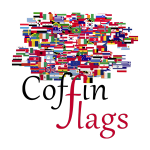Description
 Vatican City, officially Vatican City State, is an independent city-state enclaved within Rome, Italy. Established with the Lateran Treaty (1929), it is distinct from, yet under “full ownership, exclusive dominion, and sovereign authority and jurisdiction” of the Holy See (Latin: Sancta Sedes). With an area of 44 hectares (110 acres) and a population of about 800, it is the smallest sovereign state in the world by both area and population. The Vatican City is an ecclesiastical or sacerdotal-monarchical state (a type of theocracy) ruled by the pope who is the bishop of Rome and head of the Catholic Church. The highest state functionaries are all Catholic clergy of various national origins. Since the return of the popes from Avignon in 1377, they have generally resided at the Apostolic Palace within what is now Vatican City, although at times residing instead in the Quirinal Palace in Rome or elsewhere.
Vatican City, officially Vatican City State, is an independent city-state enclaved within Rome, Italy. Established with the Lateran Treaty (1929), it is distinct from, yet under “full ownership, exclusive dominion, and sovereign authority and jurisdiction” of the Holy See (Latin: Sancta Sedes). With an area of 44 hectares (110 acres) and a population of about 800, it is the smallest sovereign state in the world by both area and population. The Vatican City is an ecclesiastical or sacerdotal-monarchical state (a type of theocracy) ruled by the pope who is the bishop of Rome and head of the Catholic Church. The highest state functionaries are all Catholic clergy of various national origins. Since the return of the popes from Avignon in 1377, they have generally resided at the Apostolic Palace within what is now Vatican City, although at times residing instead in the Quirinal Palace in Rome or elsewhere.
The flag of Vatican City was adopted on 7 June 1929, the year Pope Pius XI signed the Lateran Treaty with Italy, creating a new independent state governed by the Holy See. The Vatican flag is modelled on the 1808 yellow and white flag of the earlier Papal States, to which a papal tiara and keys were later added. The Vatican (and the Holy See) also refer to it, interchangeably, as the flag of the Holy See. The flag consists of two vertical bands, one of gold or yellow (hoist side) and one of white with the crossed keys of Saint Peter and the Papal Tiara centred in the white band. The crossed keys consist of a golden and a silver key, in which the silver key is placed in the dexter position. It is one of only two square sovereign-state flags, the other being the flag of Switzerland. The Vatican City coat of arms is present in the white half. The coat of arms consists of: the papal tiara (as used under the pontificate of Pius XI); and the two keys which represent the Keys of Heaven (according to the Gospel of Matthew 16:19) given by Jesus Christ to St Peter. The popes are regarded as the successor of Peter, and the gold and silver keys have been significant elements in the symbolism of the Holy See since the 13th century. The gold represents spiritual power, while the silver key represents worldly power. The order of the keys on the coat of arms of Vatican City is the reverse of the coat of arms of the Holy See, in order to distinguish between the two entities; a red cord connecting the keys. The yellow and white of the flag also refer to the keys – in heraldic terminology, there is no distinction between yellow and gold (the metallic colour or), nor between white and silver (argent). The Argent colour has also been reported in relation to the white mountains of Lebanon and the biblical city of Miye ou Miye according to the Lebanese Historian Anis Freiha.








Reviews
There are no reviews yet.